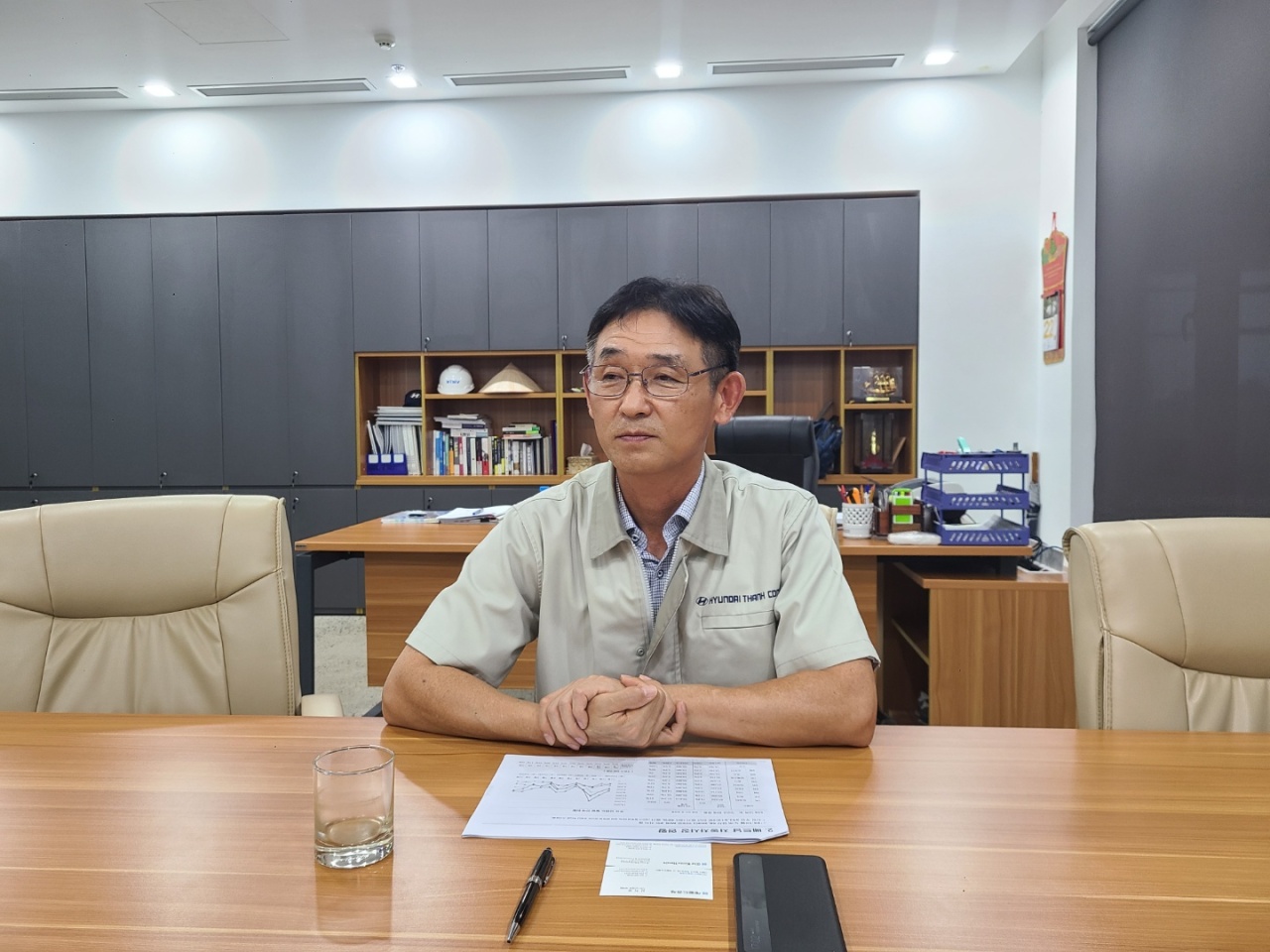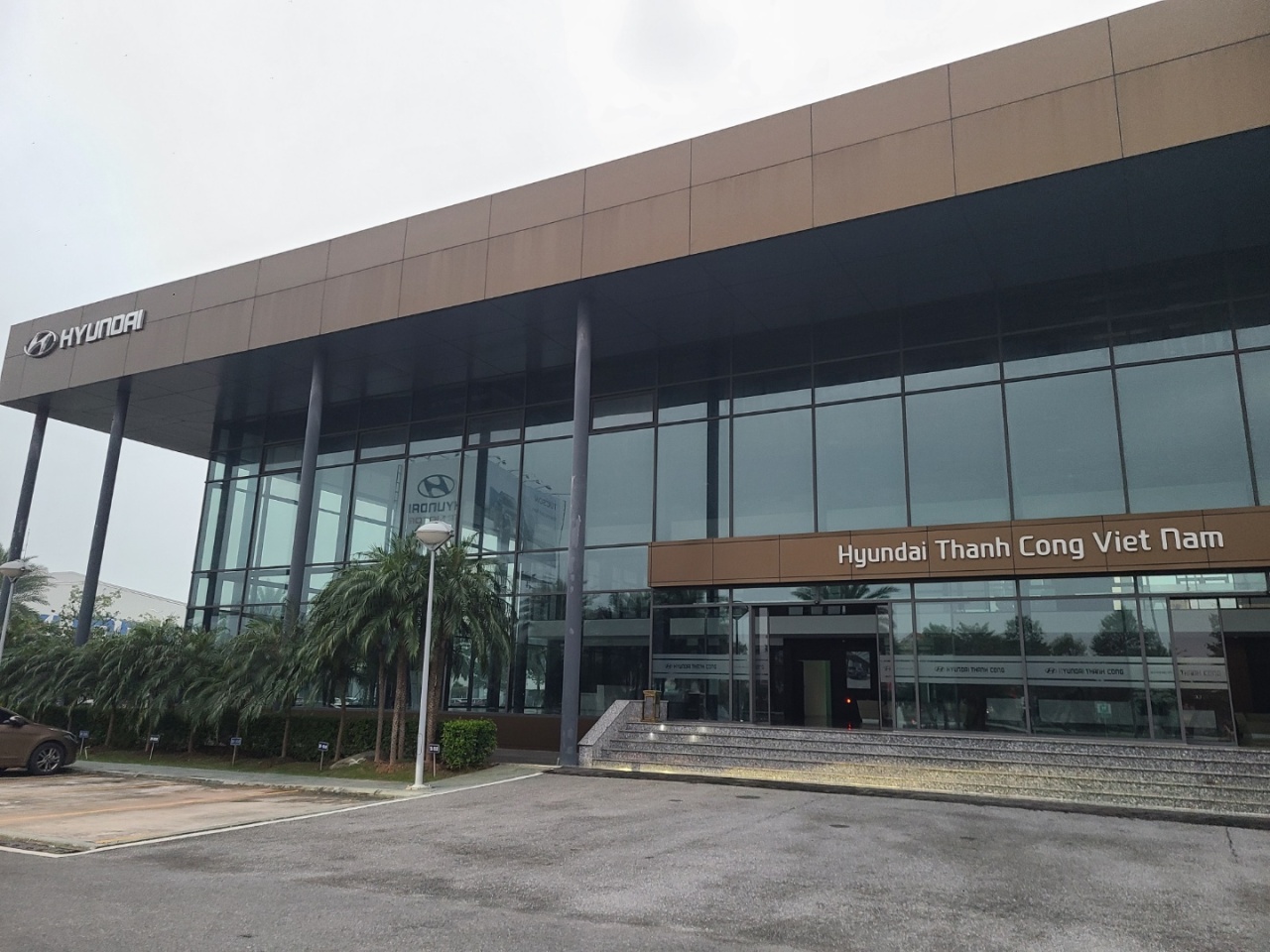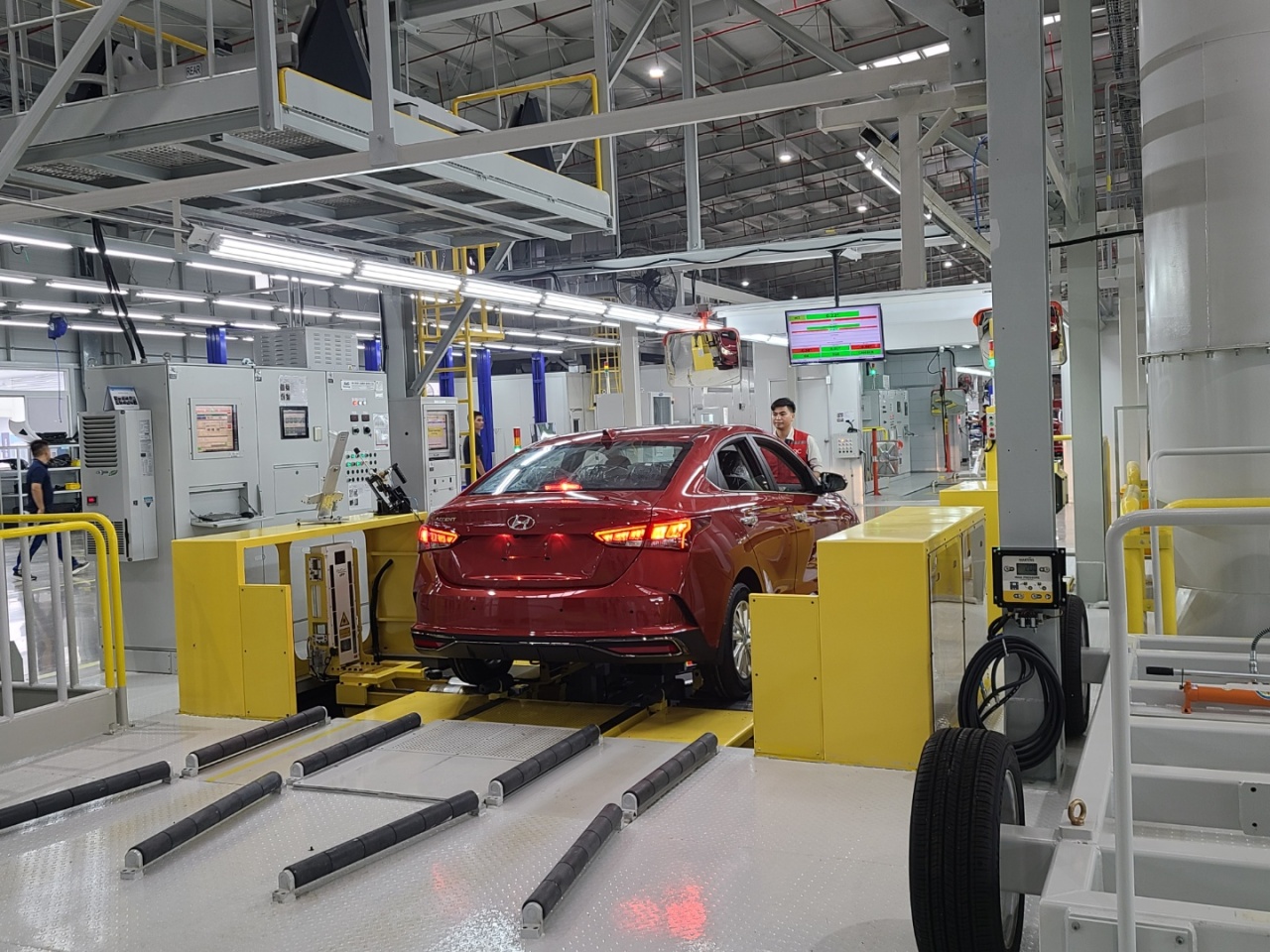Hyundai Motor eyes top spot with 2nd Vietnam plant
South Korean auto giant seeks to launch top-selling EV Ioniq 5 to Vietnam next year
By Jung Min-kyungPublished : Dec. 12, 2022 - 16:00

HANOI, Vietnam -- Hyundai Motor has mostly remained No.2 in Vietnam in terms of market share, but it seeks to change that with its new plant in Ninh Binh province, located just South of Hanoi, a senior official at the local unit told The Korea Herald.
“Bolstered by our increased annual production capacity due to the second factory that started operating in November, our annual sales in the Vietnamese market next year is projected to jump to at least 85,000 to 90,000 vehicles from the current 70,000,” Jang Hyun-gu, vice president of Hyundai Thanh Cong Vietnam Auto Manufacturing and who is in charge of operating the second plant, said in a recent interview.
Hyundai has been battling with Japanese carmaker Toyota to become the No.1 seller of the country since it entered the market in a joint venture with conglomerate Thanh Cong Group in 2009. Toyota was the top seller last year, accounting for 20.5 percent of the market share, with Hyundai and sister company Kia Motors following behind with 15.1 percent and 14.8 percent, respectively, according to industry data. Car manufacturers in Vietnam produces an average 350,000 vehicles annually.
With the help of the second factory, Hyundai will have a total 10 different vehicles in its lineup for the Vietnamese market by the end of next year, compared with Toyota’s current 16 designs.
“The second factory will adopt a double-shift work system from September next year from the current single-shift system because we’re preparing to introduce some new designs to the market. Electric vehicle Ioniq 5, sport utility vehicle Palisade, minivan Custo, alongside Creta and Stargazer -- currently manufactured in Indonesia, but slated to be produced in the second factory soon -- are in the line-up,” Jang explained.
“Bolstered by our increased annual production capacity due to the second factory that started operating in November, our annual sales in the Vietnamese market next year is projected to jump to at least 85,000 to 90,000 vehicles from the current 70,000,” Jang Hyun-gu, vice president of Hyundai Thanh Cong Vietnam Auto Manufacturing and who is in charge of operating the second plant, said in a recent interview.
Hyundai has been battling with Japanese carmaker Toyota to become the No.1 seller of the country since it entered the market in a joint venture with conglomerate Thanh Cong Group in 2009. Toyota was the top seller last year, accounting for 20.5 percent of the market share, with Hyundai and sister company Kia Motors following behind with 15.1 percent and 14.8 percent, respectively, according to industry data. Car manufacturers in Vietnam produces an average 350,000 vehicles annually.
With the help of the second factory, Hyundai will have a total 10 different vehicles in its lineup for the Vietnamese market by the end of next year, compared with Toyota’s current 16 designs.
“The second factory will adopt a double-shift work system from September next year from the current single-shift system because we’re preparing to introduce some new designs to the market. Electric vehicle Ioniq 5, sport utility vehicle Palisade, minivan Custo, alongside Creta and Stargazer -- currently manufactured in Indonesia, but slated to be produced in the second factory soon -- are in the line-up,” Jang explained.

The size of the Ninh Binh factory site amounts to 287,100 square meters, including the actual plant, an office and a big gazebo in the middle of a garden, where its workers can have lunch and take a break.
“To improve the conditions of our workers here, we have adopted Hyundai’s latest technologies for our second factory. The factory is smart and automated,” said Jang.
While only 50 percent of the manufacturing process was automated in Hyundai’s first factory in Vietnam -- opened in 2011 -- the rate comes to some 70 percent for the second plant. A total of 18 robots were installed in the second plant to improve efficiency.
“We’re ready to rise to the top in Vietnam with the second factory and diversifying our line-ups for next year,” Jang said.
Jang noted that the Vietnam’s current market is similar to that of China’s in the early 2000s, when the economy started to expand rapidly, increasing people’s interest in owning four-wheelers.
“We believe that Vietnam’s auto market will see annual sales of some 3 million to 4 million vehicles in the next decade and we’ll be prepared for that. The country’s economy is projected to grow 8 percent next year and we’re expecting the auto market to expand at least 10 percent in tandem.”
Hyundai plans to produce some 100 Ioniq 5 per month for the Vietnamese market via its second factory from the second half of next year, but major hurdles continue to exist.
Though the Vietnamese government has been pushing for its people to buy more EVs through tax benefits, a lack of infrastructure including charging stations makes it difficult for carmakers to go all-in for the game.
The Korea Trade‐Investment Promotion Agency’s recent data showed that the rate of registered EVs to all registered vehicles in Vietnam came to 0.2 percent, compared with 1.3 percent in Malaysia and 9 percent in Thailand.

“The transition into EV is not going to be swift process,” Jang said.
“More than half of Vietnam’s 98 million population is presumed to own a motorbike because it’s cheaper compared with four-wheelers. We believe the government’s efforts and role will play a big part in boosting the transition.”
Regardless of the market conditions, Hyundai believes that the “early bird gets the worm” and now is the time to start introducing its own EVs to Vietnam.
“It will be an early start which will enable us to establish a solid place and image in the market,” Jang said.








![[Graphic News] More Koreans say they plan long-distance trips this year](http://res.heraldm.com/phpwas/restmb_idxmake.php?idx=644&simg=/content/image/2024/04/17/20240417050828_0.gif&u=)
![[KH Explains] Hyundai's full hybrid edge to pay off amid slow transition to pure EVs](http://res.heraldm.com/phpwas/restmb_idxmake.php?idx=644&simg=/content/image/2024/04/18/20240418050645_0.jpg&u=20240419100350)






![[From the Scene] Monks, Buddhists hail return of remains of Buddhas](http://res.heraldm.com/phpwas/restmb_idxmake.php?idx=652&simg=/content/image/2024/04/19/20240419050617_0.jpg&u=20240419175937)

![[KH Explains] Hyundai's full hybrid edge to pay off amid slow transition to pure EVs](http://res.heraldm.com/phpwas/restmb_idxmake.php?idx=652&simg=/content/image/2024/04/18/20240418050645_0.jpg&u=20240419100350)

![[Today’s K-pop] Illit drops debut single remix](http://res.heraldm.com/phpwas/restmb_idxmake.php?idx=642&simg=/content/image/2024/04/19/20240419050612_0.jpg&u=)